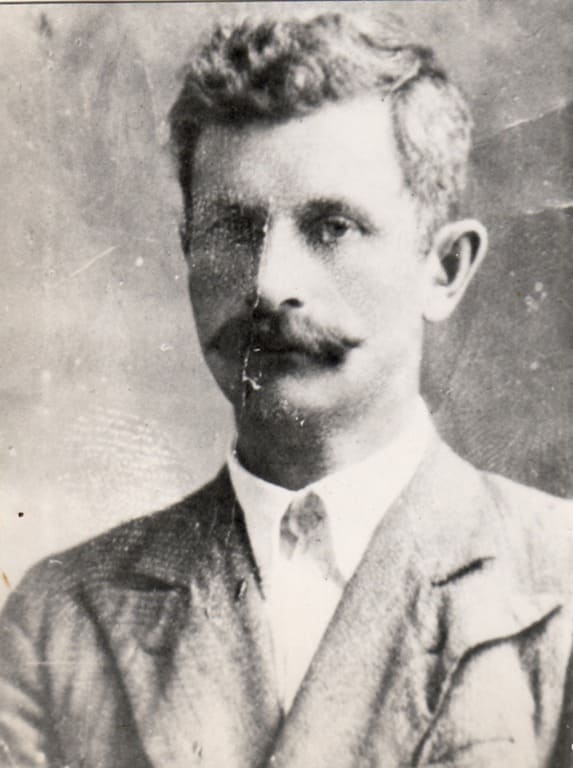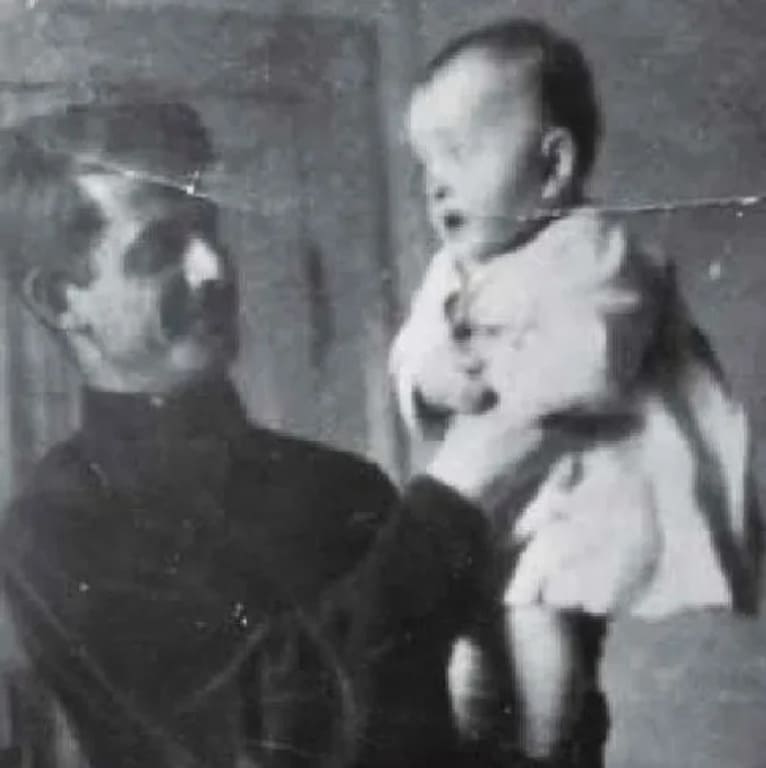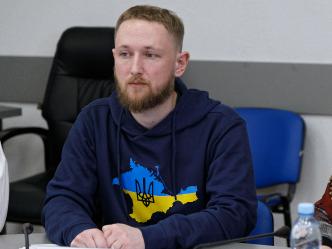Blog
13.02.2025, 20:07
 278 views
278 views
None
Not long ago, the FSB's Southern Military District Directorate made a "sensational discovery" about the Yalta Conference, the 80th anniversary of which became a significant news event both in Russia and in the
occupied
territories of Ukraine. It turned out that the event, where the post-war map was divided between the three world leaders, was actually disrupted by the omnipresent and omnipotent Ukrainian nationalists.
"83 people mobilized from western Ukraine and Belarus were removed from the unit: Nationalist manifestations were noted among them; all of them were sent to the city of Kerch, where they were provided with agent development and proper secret security," stated one of the published memos of Soviet counterintelligence on activities in military formations. However, it is not at all clear whether those people really planned to disrupt the conference in Yalta.

These days I had the opportunity to recall this episode while recording a joint program with my colleague and fellow countryman Andriy Ivanets, "Na chasі," for Ukrainian Radio. It was briefly reported that this is not the first time that Russian special services and affiliated historians from Russia and the occupied territories of Ukraine have surprised with absurd statements about the activities of members of the Ukrainian national movement in Crimea during World War II, especially since the Russian full-scale invasion of Ukraine in 2022.
Only in the past few years, the Crimean "FSB department", claiming to be "expositors of the crimes of Ukrainian nationalism", has been using declassified documents to convince the target audience that Ukrainian underground fighters in Crimea in the first half of the 1940s "collaborated with the Nazi invaders through terrorist attacks and other extremist means, served in local authorities, volunteer nationalist battalions and auxiliary police, implemented the Nazis' repressive policies, participated in punitive operations, directly engaged in treason, murder and other criminal offenses against prisoners of war and civilians, spread the ideology of the exclusivity of the Ukrainian nation, actively sponsored and armed The Ukrainian Insurgent Army fighters," etc.
It even goes as far as loud statements that members of the Crimean cells of the Organisation of Ukrainian Nationalists (OUN), which after World War II were counted by Soviet counterintelligence to be up to 60, were allegedly involved in the mass shootings of Jews and Krymchaks by the German Nazis in Crimea. However, no clear substantiated evidence is provided to support these claims. Perhaps someone would be quite surprised to learn that some of the Ukrainian underground members in Crimea, such as Leonid Larzhevsky and his family, have the status of Righteous Among the Nations for saving Jews from the Nazis. In addition, in February 1942, the Gestapo shot both members of the local Jewish community and Ukrainian activists in anti-tank trenches near Dzhankoi. The latter were handed over to the Germans by former Russian monarchist emigrants who watched over the executions.
On February 13, 1945, shortly after the Yalta Conference, the NKVD executed Volodymyr Sharafan, the spokesman for the Crimean regional leadership of the OUN, as well as other enemies of the fighters for the freedom of Ukraine. At least this date is reported by archival data.

Volodymyr Sharafan was born in Kyiv in 1908 (the exact date is unknown). According to family legends, he came from a noble family on his father's side - former Zaporizhzhia Cossacks. At the age of 10, he lost his father, and after the Soviet occupation of Ukraine, as a teenager, he found himself in an orphanage in Novyi Starodub in Zlatopillia, where he was raised until he came of age. His mother remarried and was living in her native Crimea, where several generations of her ancestors had lived.
After graduating from the Kirovohrad Pedagogical College, Volodymyr Sharafan was a lecturer at the evening workers' university since 1930. After some time, fleeing the Holodomor, he moved to the Crimea, where he studied at the Faculty of Physics and Mathematics of the Simferopol Pedagogical Institute, where he taught physics after graduating in 1938, and also worked at the Simferopol Canning College. He married a colleague Sofia Shlenksho, a native of Kuban,
the daughter of a Pole executed by the NKVD. The couple had a daughter and a son (according to some sources, two sons).


Volodymyr Sharafan with his daughter Lyudmyla
While living in Simferopol, Volodymyr Sharafan was fond of radio engineering, collected gramophone records, was engaged in artistic photography, and also had a large home library of more than two thousand publications.
In August 1941, after Hitler's Germany attacked its recent ally, the Soviet Union, Volodymyr Sharafan was mobilized into the Red Army. In the fall, the soldiers of the 172nd Motorized Rifle Division, in which he was a scrivener of repair shops with the rank of private, were surrounded near Sudak and, without waiting for evacuation, destroyed their equipment and documents and headed for Sevastopol. Sick at the time, Sharafan was unable to move, so he was captured by the Romanian military and sent to a prisoner of war camp in Karasubazar. A few days later, he managed to escape to the village of Petrivka, Zuia district, where his mother, stepfather, and wife and children lived. At the end of 1941, Volodymyr Sharafan got a job as an accountant of ownerless property in the inventory bureau at the Simferopol city administration and moved his family to his home; in April of the following year, he went to work at a commercial bakery.


At the same time, in the spring of 1942, Sharafan met in Simferopol with local OUN (M) activists Yaroslav Savka (probably his real name was Vasyl Savchyshyn) and Borys Sukhoversky, who were trying to organize an underground network. A few years later, during the investigation,
Sharafan
would confess to being a member of the OUN (M) in February-May 1942. At least it is known that in late spring or mid-summer 1942, Volodymyr Sharafan was already active in the OUN (R), under the pseudonyms "Usach" and "Sha," and was the owner of a secret apartment. At that time, a directive issued in November 1941 by the German command to the police and security services was in effect, which stated: "All activists of the Bandera movement must be immediately arrested and, after a thorough interrogation, secretly eliminated as robbers."
In addition to underground activities, Volodymyr Sharafan was also engaged in legal: in particular, he managed to establish a Ukrainian elementary school for 40 pupils and later helped to develop it into a secondary school. In 1943, the Germans switched the school to Russian as the language of studies; Ivan Tykhonovych became its director, who was sent to camps for 10 years in 1946 by the NKVD for allegedly being a member of the OUN. Today, Russian propaganda lists Tikhonovych, who was a correspondent for the Russian-language chauvinist newspaper Golos Kryma, as one of the "leaders of Ukrainian nationalism in Crimea."
At the end of September 1942, Simferopol activists created the Ukrainian Committee, which was associated with commercial and industrial enterprises and the Bureau of Assistance to the Ukrainian Population, which had been opened earlier under the city administration. In this committee, Volodymyr Sharafan served as deputy chairman, dealing with propaganda, school education, and library affairs. In just a few months, the German command liquidated the Ukrainian Committee, which employed half of a dozen people, for failing to comply with a ridiculous order to find 400 volunteers to guard the railroad. Later, the committee members did not carry out any practical work due to the lack of real estate and subsequently continued their activities through the Bureau for Assistance to the Ukrainian Population.
In mid-1943, the Crimean regional leadership of the OUN was headed by the aforementioned Leonid Larzhevsky, who replaced Kateryna Meshko (Logush). Among his appointees was Volodymyr Sharafan, who became a political/propaganda
referent: he maintained contacts with the Red underground, including the Sokol group, to whose members he passed intelligence on the location of German troops, weapons and fuel depots, strategic facilities, and lists of collaborators. In September, Sharafan went to Sicheslavshchyna, from where, after receiving instructions, he returned to Simferopol in October with the duties of a regional leader. However, since then, the OUN(R)'s active work in Crimea has virtually ceased.
Meanwhile, Volodymyr Sharafan's mother Raisa Marchenko and her husband Yakiv, who worked as teachers, were imprisoned by the Gestapo because of their ties to the underground. Raisa was released thanks to a false certificate of allegedly poor mental health; Yakiv, with his fingers and toes cut off, was sent to camps in Germany, from where he managed to return to Kyiv region after the war.
During the offensive in April 1944, Soviet troops entered Crimea. Volodymyr Sharafan, who remained in Simferopol with his family without communication with the leadership, practically without competent personnel and legal cover, was miraculously mobilized to the Red Army in a few days and took part in the battles near Sevastopol. On May 1, Sharafan, who was seriously wounded in an explosion, was left in the open air, but later he was taken to Simferopol, where he was treated at home and then transferred to an evacuation hospital in Alushta. There, in the summer of 1944, he was arrested by the NKVD.
The main charge against Volodymyr Sharafan was voluntary surrender with arms in hand in the fall of 1941, but during the investigation he was also accused of membership in the regional leadership of the OUN and the Ukrainian Committee. Sharafan did not expose anyone during interrogations. He said that he had a mission to bring the national feelings of Crimean Ukrainians to the level of the population of mainland Ukraine through propaganda and cultural work in order to further unite them.
On December 4, 1944, under Article 58-1 "b", 11 of the USSR Criminal Code ("high treason"), Volodymyr Sharafan was sentenced to death by firing squad with confiscation of property. The case file indicates that the sentence was carried out only on February 13, 1945 - however, it is possible that Volodymyr Sharafan was already dead at the time of his sentence. The place of execution and burial of the Ukrainian underground activist in Crimea is still unknown. Only on December 18, 1993, Volodymyr Sharafan was posthumously rehabilitated by the military prosecutor's office of the Southern region of Ukraine.
...Decades have passed. Today's Russia is trying to "save face" and, unlike its satellite, Belarus, not to introduce the death penalty. Who knows for how long. However, in less than three years, at least in the occupied Crimea, cases of repression against people who demonstrate in various ways (quoted from
"of court verdicts") "forbidden Nazi symbol" - the ancient princely sign, the national symbol of Ukrainians, the state emblem of Ukraine. Which will sooner or later return to its place where it was overthrown.
 278 views
278 views
The published material is copyrighted. The opinions expressed in the author's blog may not coincide with the position of the editors of the «Voice of Crimea» IA.















